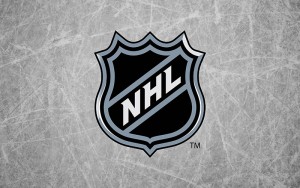A common weakness shared among hockey players is this: Their skating speed is robbed by the shallowness of their skating stride.
Whether you are chasing your opponent around the rink, or you are trying to get down the ice as fast as you can to make that winning goal – skating speed is vital when it comes to the game of hockey.
While speed is primarily influenced by stride length, your legs are only so long – therefore, you cannot push any further if your leg is not any longer.
It kind of seems like an impossible problem to fix, right?
Wrong.
Commonly, hockey players only extend their leg to outside hip level. In addition to limiting their leg extension, they also lack strength when their leg is under their center of mass – both actions leave them with both a shorter stride and a shortened push.
Thankfully, with a few unilateral leg workouts, you can improve your hockey speed despite the length of your legs.
Next time you hit the gym, a few workouts to keep in mind include:
Lateral Lunge.
If you only have time for one hockey-improving exercise, choose the lateral lunge. This specific exercise forces you to move side-to-side in the frontal plane, as opposed to in the sagittal plane.
The hockey stride is actually more frontal than sagittal, making this exercise incredibly beneficial in skating speed. The strong lunge position, knee bend, hip hinge and neutral spine with full extension practiced in this exercise is the key form of any NHL player’s stride.
Slideboard Reverse Lunge.
The slideboard reverse lunge primarily focuses on strengthening the quads, with a lesser focus on the glutes, hamstrings, outer thighs, and calves. This exercise can be effectively used for things like the player’s medial hip, core, upper body pressing, and posterior chain.
This is a great way to work the muscle groups used on the ice, without actually being in your equipment, on the ice.
Single Leg Squats.
Single leg squats help hockey players develop the narrow base needed for the sport. These squats also help players train for control and strength of their lower body.
This simple exercise can be done standing on a box or squatting to a box and will really make a difference on the ice.
Bowler Squat.
This exercise involves some knee flexion, with most of the motion occurring at the hips. Most exercises occur purely within the sagittal plane and neglect the glutes – despite their activity level.
However, the bowler squat efficiently challenges the gluteus maximus both in activating and lengthening a weight-bearing position in all three planes of the body.
Bowler Squat is excellent choice for creating mobility in the hips and is practiced in different sports. Interestingly, professional pool table players often use this exercise to improve the coordination and stability.
Rear-Foot-Elevated or Bulgarian Split Squat.
The rear-foot-elevated (RFE) or Bulgarian split squat is done using one leg at a time, with the opposite leg elevated behind you on a chair or bench. This exercise improves just about all areas needed to be an efficient hockey player and to improve your skating speed: increased strength and power, more hip flexibility, and better balance.
Overall, hockey is a game focused on agility, endurance, quickness, and speed. By improving your skating speed, you will improve your overall game performance. By strengthening your legs one at a time, you will be sure to address all muscles used during the game. Single leg training also allows you to work out other muscles that are not used as commonly, only further increasing your flexibility and agility on the ice.
Now, go hit the gym and start working out those legs and glutes – the ice and your hockey skates are just waiting for you to get back out there, faster than ever!
*This is a sponsored guest post


